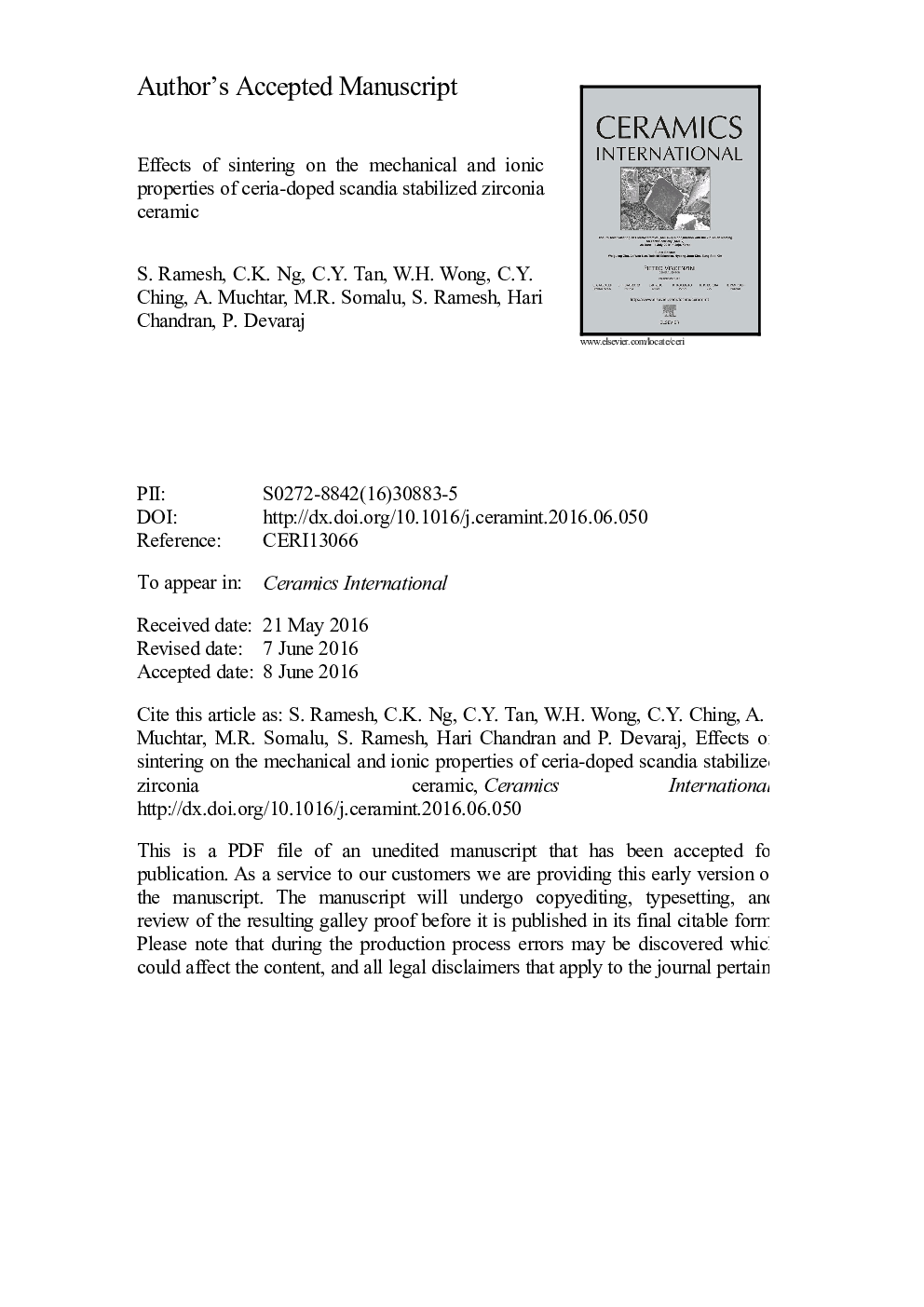| Article ID | Journal | Published Year | Pages | File Type |
|---|---|---|---|---|
| 10624044 | Ceramics International | 2016 | 22 Pages |
Abstract
The effect of conventional sintering from 1300 to 1550 °C on the properties of 1 mol% ceria-doped scandia stabilized zirconia was investigated. In addition, the influence of rapid sintering via microwave technique at low temperature regimes of 1300 °C and 1350 °C for 15 min on the properties of this zirconia was evaluated. It was found that both sintering methods yielded highly dense samples with minimum relative density of 97.5%. Phase analysis by X-ray diffraction revealed the presences of only cubic phase in all sintered samples. All sintered pellets possessed high Vickers hardness (13-14.6 GPa) and fracture toughness (~3 MPam1/2). Microstructural examination by using the scanning electron microscope revealed that the grain size varied from 2.9 to 9.8 µm for the conventional-sintered samples. In comparison, the grain size of the microwave-sintered zirconia was maintained below 2 µm. Electrochemical Impedance Spectroscopy study showed that both the bulk and grain boundary resistivity of the zirconia decreases with increasing test temperature regardless of sintering methods. However, the grain boundary resistivity of the microwave-sintered samples was higher than the conventional-sintered ceramic at 600 °C and reduced significantly at 800 °C thus resulting in the enhancement of electrical conduction.
Related Topics
Physical Sciences and Engineering
Materials Science
Ceramics and Composites
Authors
S. Ramesh, C.K. Ng, C.Y. Tan, W.H. Wong, C.Y. Ching, A. Muchtar, M.R. Somalu, S. Ramesh, Hari Chandran, P. Devaraj,
